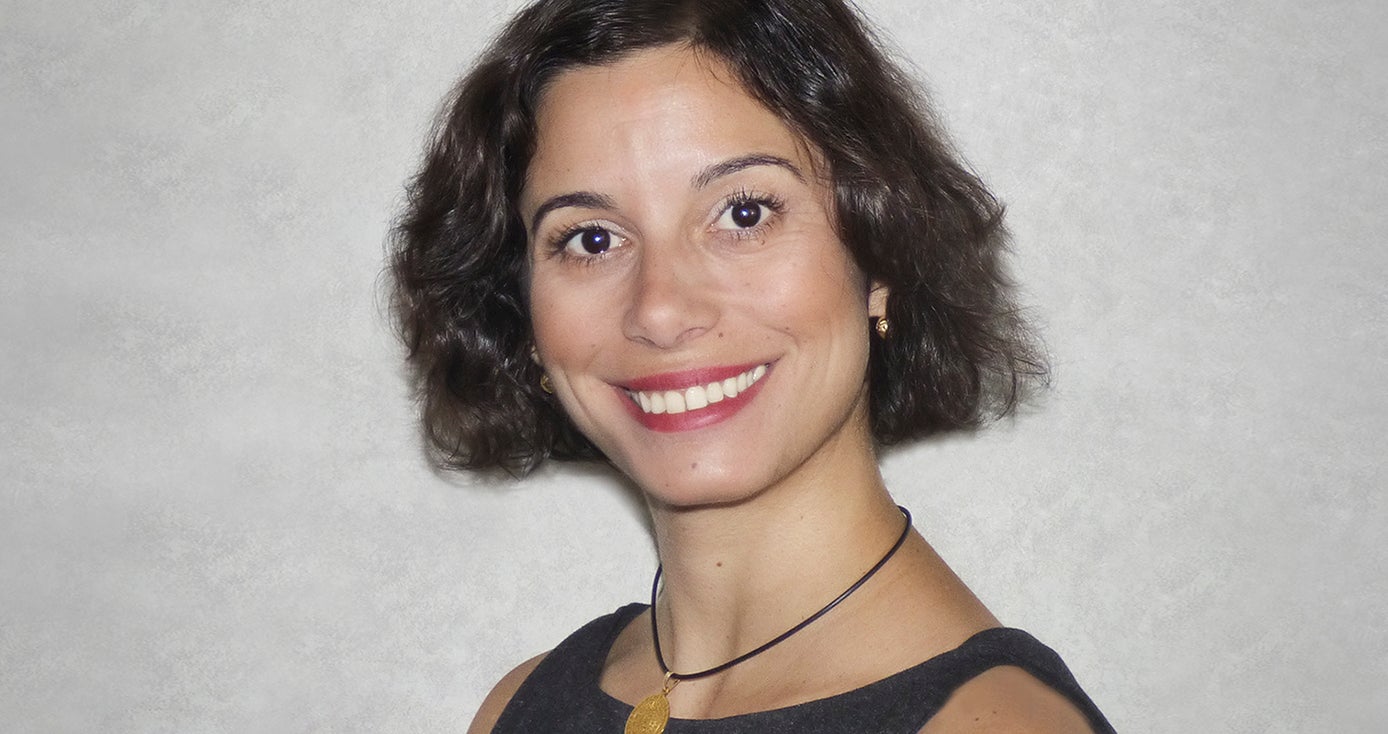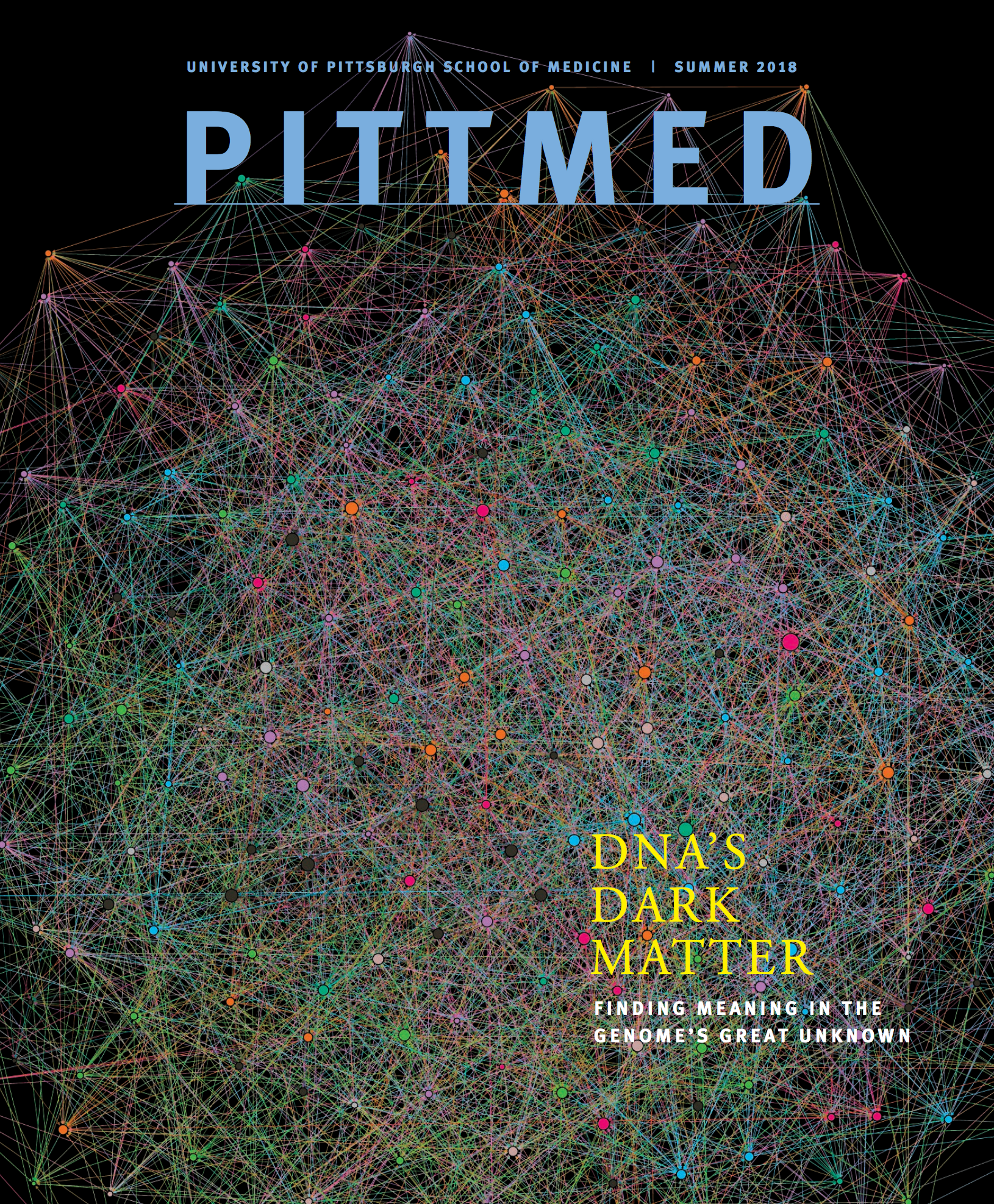
Subscribe to Pittwire Today
Get the most interesting and important stories from the University of Pittsburgh.DNA’s Dark Matter Comes to Light
This story, written by Elaine Vitone, is excerpted from the summer 2018 issue of Pitt Med magazine.
For decades, we thought that genes were a lot like us: forged from the same stuff as our parents, and their parents before them, and so on, dating all the way back to Common Ancestor Immemorial. Every gene on Earth was thought to have used as its template one of the small number of genes that were around when life began.
But then, when it became possible to compare the genomes of various species against each other, researchers started finding misfits — so-called “orphan” genes that looked nothing like their neighbors. They didn’t have any counterparts in other species either — not even in close cousins. If we Earthlings all got here solely by gene duplication, this made no sense. So for years, many scientists didn’t believe orphan genes were real genes.
And if you sequenced the genome of an organism and found something that looked like a gene but didn’t have a “family”? Sorry, it couldn’t be a gene.
In 2006, a group at Harvard University was scratching their heads over how the literature could’ve been so wrong about their model organism, yeast. Anne-Ruxandra Carvunis, then an aspiring PhD student, joined the lab just as they were taking a closer look at these orphans and finding their behavior remarkably ... unremarkable.
They were just ordinary genes, albeit oddballs.
Carvunis, who’s now an assistant professor of computational and systems biology at the University of Pittsburgh, was perplexed. Wait. These genes are perfectly normal, but they don’t have families? So where do they come from? To answer this lingering question, Carvunis looked to evolution, which has become a focal point of her career.
“I didn’t have a passion for it growing up,” she says. “I mean, like a lot of children, I was a fan of dinosaurs and all that, but I didn’t think [evolution] was my scientific calling. It just came because of data that pulled me in. And, once you’re in, you’re in.”
Carvunis ended up studying network biology at Harvard for her PhD. In parallel with her dissertation, which was on protein interactions, she began to design her own studies of de novo genes, as the literature had begun to call them (from the Latin word for “new”). At the time, just over a dozen papers on the topic existed.
After Carvunis finished her doctorate, she wrote up an exhaustive de novo gene treatise, using yeast as her model. The paper, which was published in Nature in 2012, proposed a plausible mechanism for de novo–gene genesis for the first time. And it marked a tipping point for the field. Search Google Scholar today, and “de novo gene birth” yields 325 hits. More than 250 of them cite Carvunis.
As it turns out, within the genome, there’s an awful lot going on beneath the surface.
In humans, the 20,000 protein-coding genes that researchers typically study only account for about 25 percent of our DNA. Then there’s “the rest,” Carvunis explains — a mysterious expanse that some call “dark matter” or, far less flattering, “junk DNA,” basically, because nobody could figure out what it was there for. It’s turbulent, constantly changing. It’s also very messy: tons of repetition and traces of our bodies’ many tangles with viruses along the way. (“We’re very virus-y,” she says.)
In her studies of brewer’s yeast, Carvunis examined 108,000 short sequences from that genome’s great unknown and found that more than 1,000 of these elements were engaged with the cell’s protein-production machine — evidence that the so-called junk had the potential to become proteinaceous.
For reasons like this, many prefer the term “intergenic” to “junk.”
And, amid darkness and chaos, Carvunis saw order. If a new element was bad for the cell, it was game over for that material. If it was neutral, what happened next was left to chance. And if the element turned into something useful, then natural selection could take hold. Beneficial mutations would snowball, and eventually, this little nugget of nothingness would gain all the characteristics of a gene, invented wholly from scratch.
Search Google Scholar today, and “de novo gene birth” yields 325 hits. More than 250 of them cite Carvunis.
“So, those elements — I call them proto-genes,” says Carvunis, “I found thousands of them in the yeast, which only has 6,000 genes. It was crazy.”
In January 2017, Carvunis came to Pitt as a co-founder and executive committee member of the Pittsburgh Center for Evolutionary Biology and Medicine, slated to open this summer. At 37, she’s an international leader in evolutionary systems biology — a new field at the nexus of evolutionary theory, genomics and computational and systems biology. She’s been quoted in stories about gene birth in The New York Times and New Scientist. This spring, she was named a Searle Scholar, one of the most prestigious honors awarded to early career biologists. Her proto-gene paper remains a popular favorite in scientific journal clubs from a variety of fields. At conferences, and in e-mails from young scientists around the world, she often hears that her work has been a source of inspiration — and a reason to rethink dissertations.
Carvunis’s colleagues will tell you she loves big ideas. She relishes a good confab over morning coffee in the lab. (The native Parisian spent much of her teen years haunting cafes and talking, talking, talking with friends.) She loves to talk science. And broader context/perspective. And evolution! And Where All This Is Going! (Sometimes, when she gets really excited, she lapses into French.)
In her latest paper, a co-authored commentary in Nature Immunology, Carvunis applied her evolutionary systems biology approach to one of the most perplexing challenges in biomedicine: Why is it that 90 percent of phase I clinical trials fail to advance? That is: Why isn’t what’s good for the mouse more frequently good for the man or woman, as well?
There’s more to the story — and several more breakthroughs to come. Continue reading about Carvunis and her revolutionary work.



